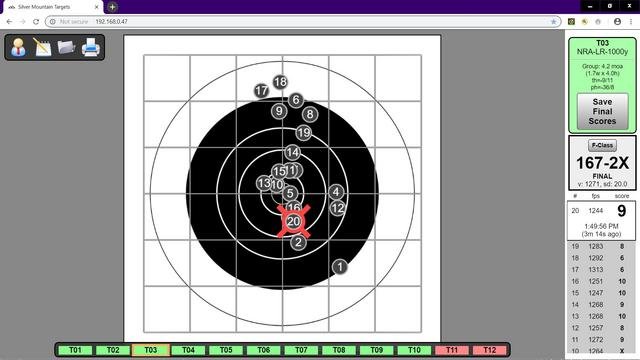Twangbanger
Grandmaster
- Oct 9, 2010
- 7,098
- 113
Uh, wow. My last extreme spread was 83 over 20 shots. With factory match ammo. Guess this is part of that learning experience everybody talks about.
Uh, wow. My last extreme spread was 83 over 20 shots. With factory match ammo. Guess this is part of that learning experience everybody talks about.
20. Lab Radar.
Most testing is done in 5 shot groups. But to see the impacts cross referenced to your scores, look at your velocities. Remember, velocity only changes your verticals.
Run the numbers on a ballistics calculator with the velocity being the only variable.
POI difference at 1K will probably surprise you.
20. Lab Radar.
Most testing is done in 5 shot groups. But to see the impacts cross referenced to your scores, look at your velocities. Remember, velocity only changes your verticals.
Add a 10 mph wind to the variables and see if you still argue that velocity only affects verticals.

I like this sport. But this has really got my thinker working overtime. It is going to be a loooong winter...
...Juar think about your quiet drive home that day.... am I right?!...
SD, ES, Sighter #1, Sighter #2, sloughfoot, Litlratt, bag of cat litter? What a great thread!
Terms that will make the young ones scratch their heads.
Great to see you all posting good info here.
My favorite advice is to buy all the points that you can afford and then practice to get the rest of them.
Barrel/ammo combination is probably the most critical of the system. Admittedly, I'm a Krieger, around 30 of them and Sierra, around 180,000 of them, fanboy.
A mechanically sound scope is required. I still believe that you do not have to be able to see the target, you simply need to know where it's at.
A good, adjustable stock is important. It supports the action and makes it easier to execute good shots (which, in my opinion) is the most important thing in shooting long range.
Triggers do not make a rifle more accurate, but they do make it easier to execute good shots. See above.
As I was a sling shooter, I have limited knowledge regarding rests, bipods and bags.